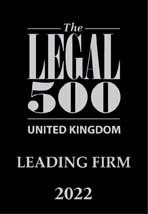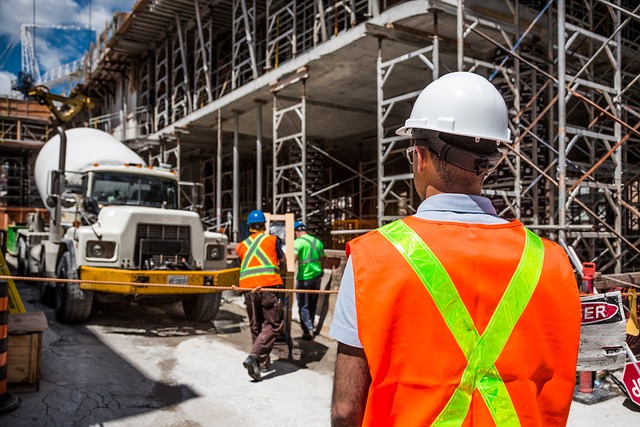Blackstone Solicitors explores Approved Document K (AD K), a vital component of building regulations in England and Wales. Part K focuses on ensuring the safety of building users by addressing the risks of falling, collision, and impact within and around buildings. In this article, Buildings Regulations UK Part K, we will delve deeper into the subject.
Please click here to find out more about our Construction Law services
Free Initial Telephone Discussion
For a free initial discussion with a member of our New Enquiries Team, get in touch with us today. We are experienced in dealing with all the legal aspects of building regulations and once instructed, we will review your situation and discuss the options open to you in a clear and approachable manner. Early expert legal assistance can help ensure you are on the best possible footing from the start and also avoid the stress of dealing with these issues on your own. Simply call us on 0345 901 0445 or click here to make a free enquiry and a member of the team will get back to you.
What is Approved Document K?
Approved Document K, also known as AD K, is a guidance document published by the Department for Levelling Up, Housing and Communities (DLUHC). It provides practical guidance on how to comply with the Building Regulations (England and Wales) 2010 in relation to protecting people from falling, collision, and impact.
Key Requirements of AD K
AD K outlines various measures to safeguard building occupants and visitors from potential hazards:
- Stairs, Ladders, and Ramps: These elements must be designed and constructed to a specific standard to ensure user safety. This includes requirements for tread dimensions, handrails, gradients, and slip resistance.
- Protection from Falling: Measures must be in place to prevent falls from various heights, including:
- Guarding for stairs, balconies, and flat roofs accessible to people.
- Strong enough demarcation for changes in level to prevent accidental falls.
- Vehicle Barriers and Loading Bays: Barriers are required to separate vehicles from pedestrians and cyclists in designated areas. Loading bays must also adhere to specific safety specifications.
- Protection Against Impact with Glazing: Glazing installations, particularly in high-risk areas or at low levels, must be constructed with safety glass or protected by a guarding system to minimize the risk of injury from accidental impact.
- Additional Provisions: AD K also addresses specific safety considerations for certain building types, such as dwellings, workplaces, and educational buildings.
When Does Part K Apply?
AD K applies to a wide range of construction projects, including:
- New build dwellings (houses and flats).
- Extensions and alterations to existing buildings.
- Changes of use for existing buildings.
- Workplaces and commercial buildings.
- Educational buildings and public buildings.
There may be some exemptions for minor building works or specific types of buildings. It’s always advisable to consult with a building professional or your local Building Control department to determine if AD K applies to your project.
The Importance of Compliance with Part K
Compliance with AD K is not just a legal requirement; it’s crucial for ensuring the safety of building occupants. Here’s why adherence to Part K matters:
- Minimizes Risk of Injuries: Properly designed and constructed stairs, ramps, and guarding systems significantly reduce the risk of falls and falls from heights. Safe glazing installations minimize the potential for injuries from accidental impact.
- Enhances Building Safety: Compliance with AD K contributes to a safer built environment for everyone using the building.
- Avoids Legal Issues: Failure to comply with AD K can lead to enforcement action by your local Building Control department, potentially resulting in fines and stop-work orders. In extreme cases, non-compliant buildings may be difficult to sell or obtain insurance for.
Blackstone Solicitors: Your Partner in Building Regulations Compliance
At Blackstone Solicitors, our construction law team can assist you with all aspects of building regulations, including Part K:
- Advising on the applicability of AD K to your specific project and its specific requirements.
- Liaising with Building Control on your behalf to ensure your plans comply with Part K.
- Helping you understand your obligations as a building owner, designer, or contractor regarding AD K compliance.
- Guiding you through the building approval process.
- Representing you in case of disputes with Building Control.
Conclusion
Building regulations, including Approved Document K, play a vital role in ensuring safe and habitable buildings. Blackstone Solicitors can be your trusted advisor throughout the construction process, helping you navigate the requirements of Part K and achieve compliant and safe buildings.
How we can help
We have a proven track-record of helping clients deal with the legal implications of building regulations compliance. We will guide you through all the necessary legal due diligence in a comprehensive and timely manner and support and advise you with all the negotiations. We firmly believe that with the right solicitors by your side, the entire process will seem more manageable and far less daunting.
Please click here to find out more about our construction legal services.
Deciding when (or whether) to incorporate, what kind of ownership How to Contact our Construction Solicitors
It is important for you to be well informed about the issues and obstacles you are facing. However, expert legal support is crucial in terms of saving you money and ensuring you achieve a positive outcome.
To speak to our Construction solicitors today, simply call us on 0345 901 0445 , or allow a member of the team to get back to you by filling in our online contact form. We are well known across the country and can assist wherever you are based. We also have offices based in Cheshire and London.





